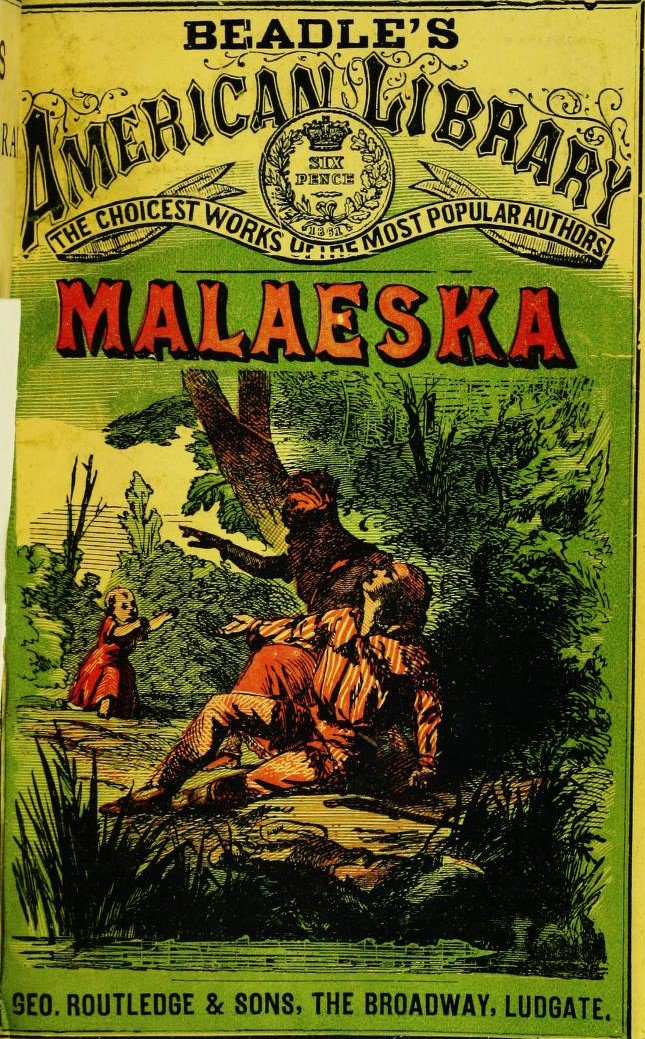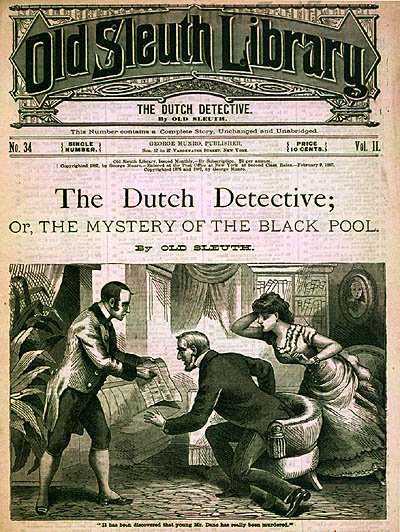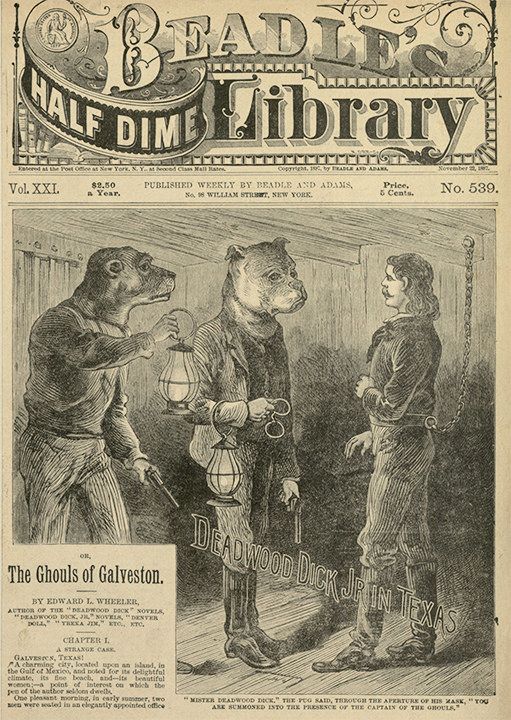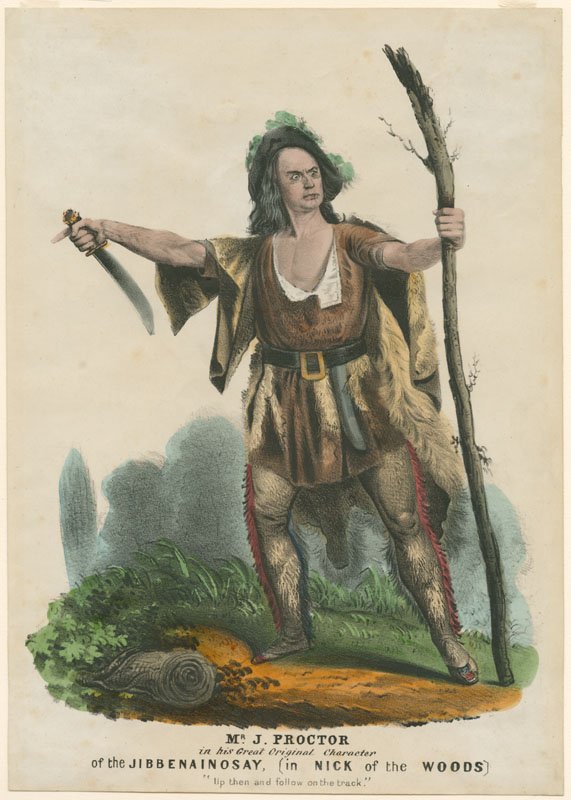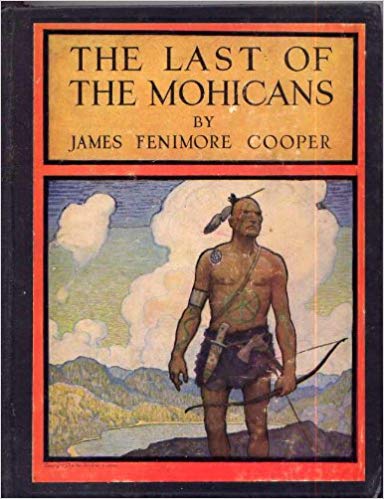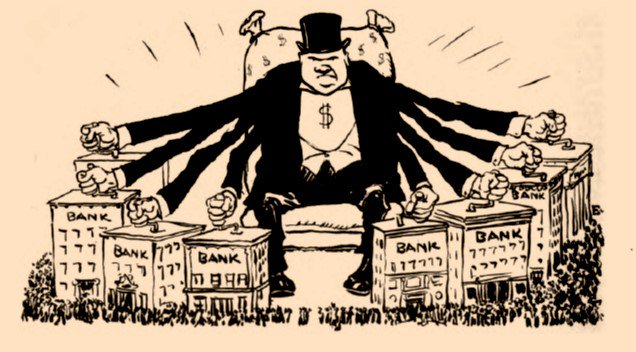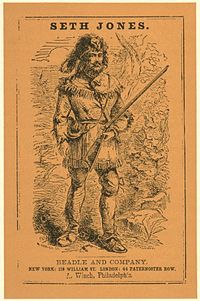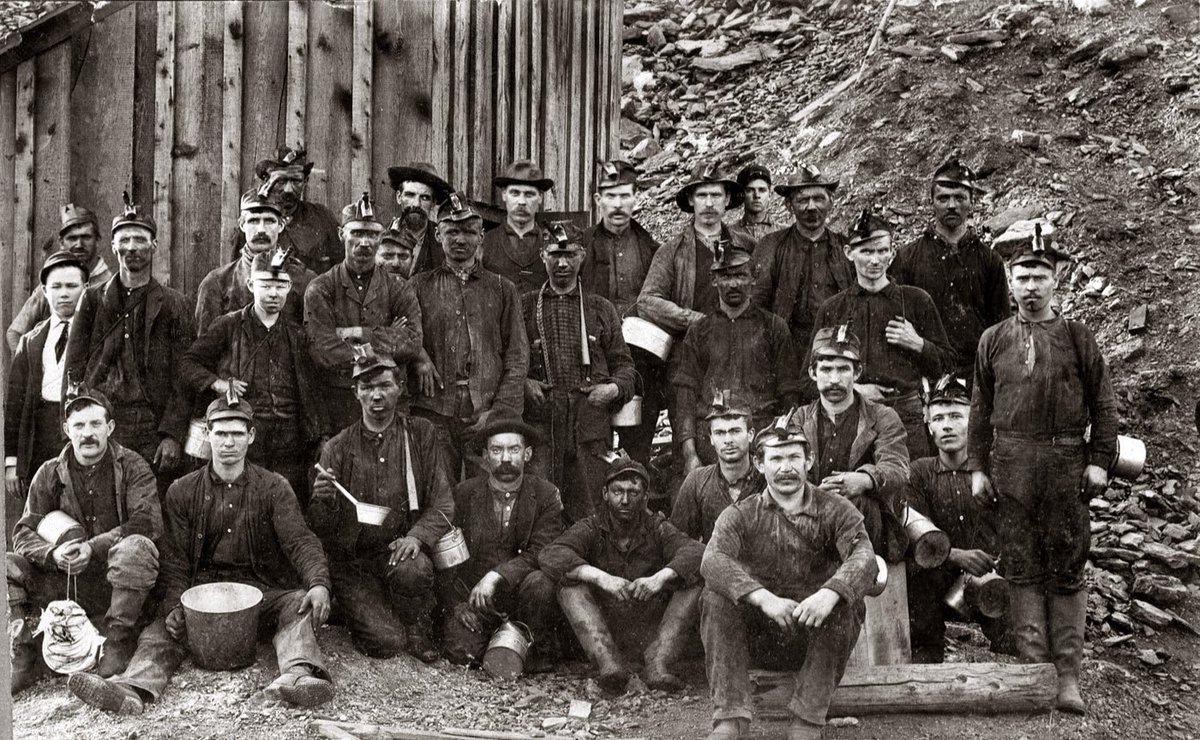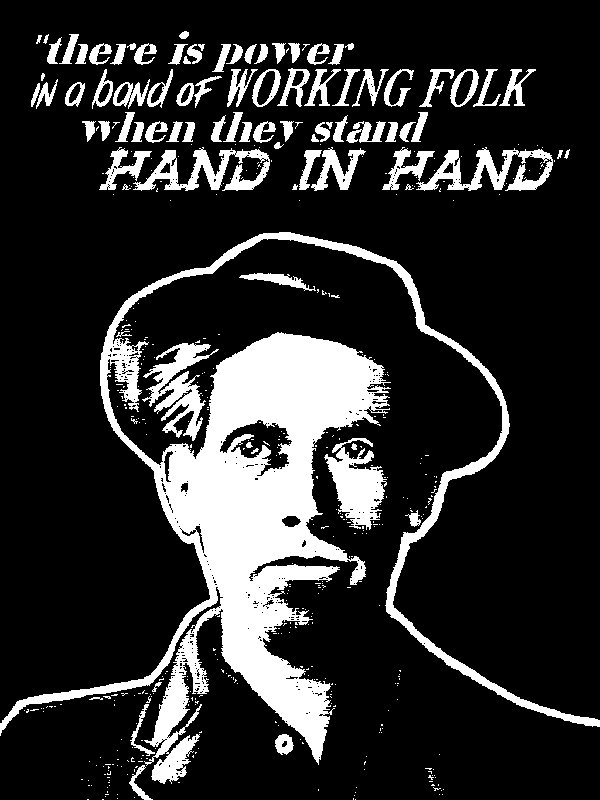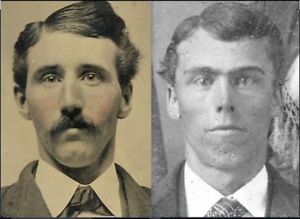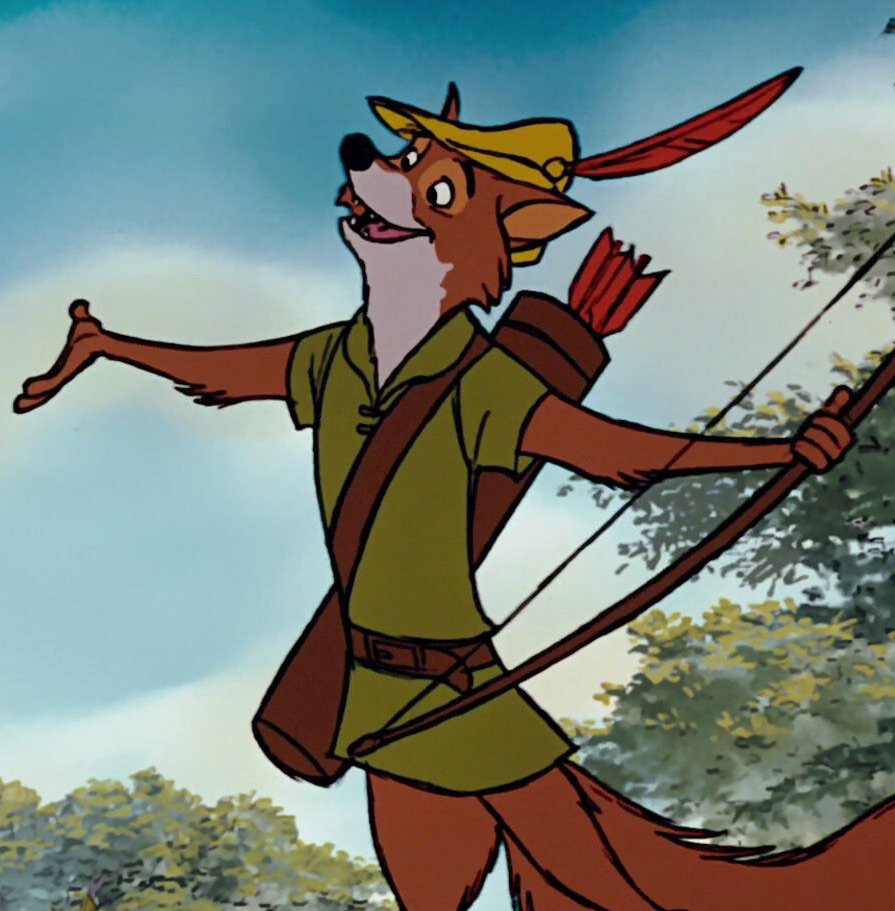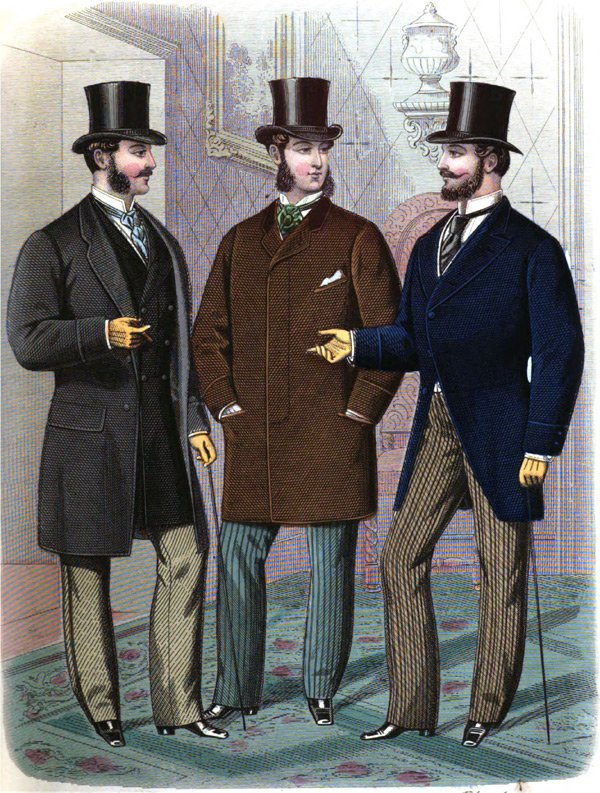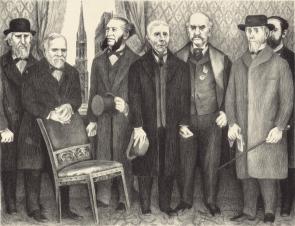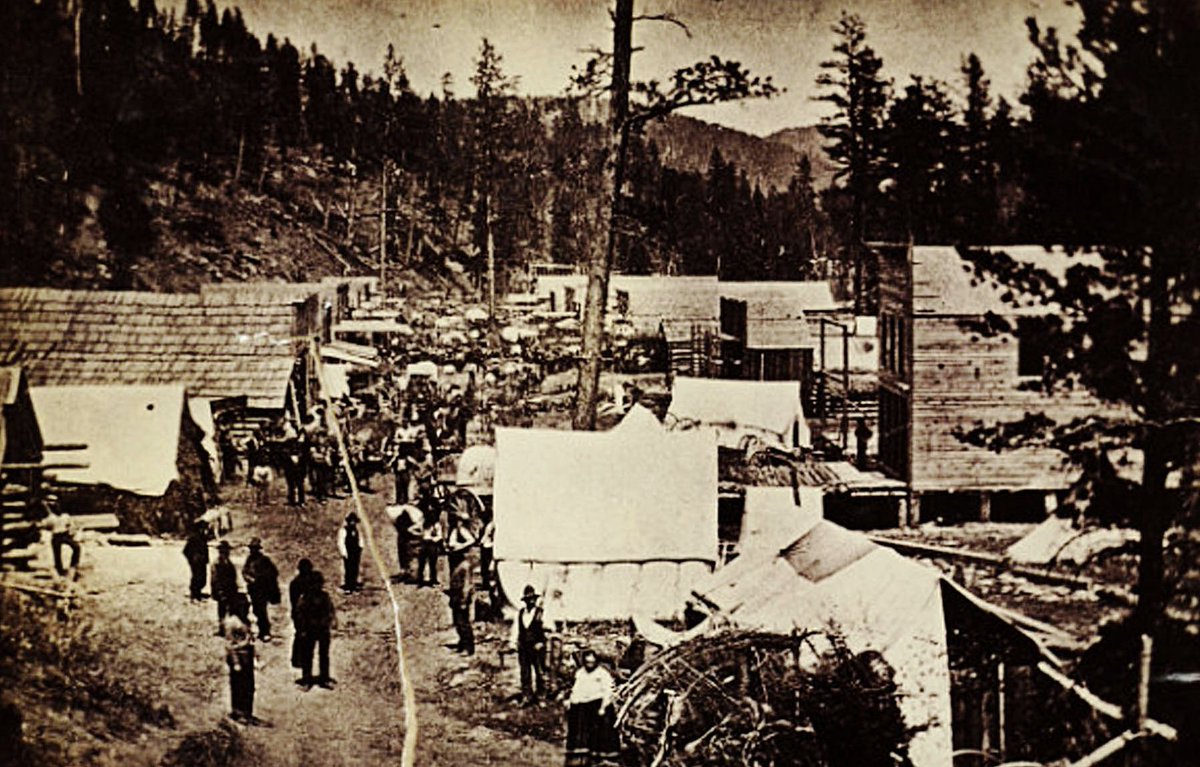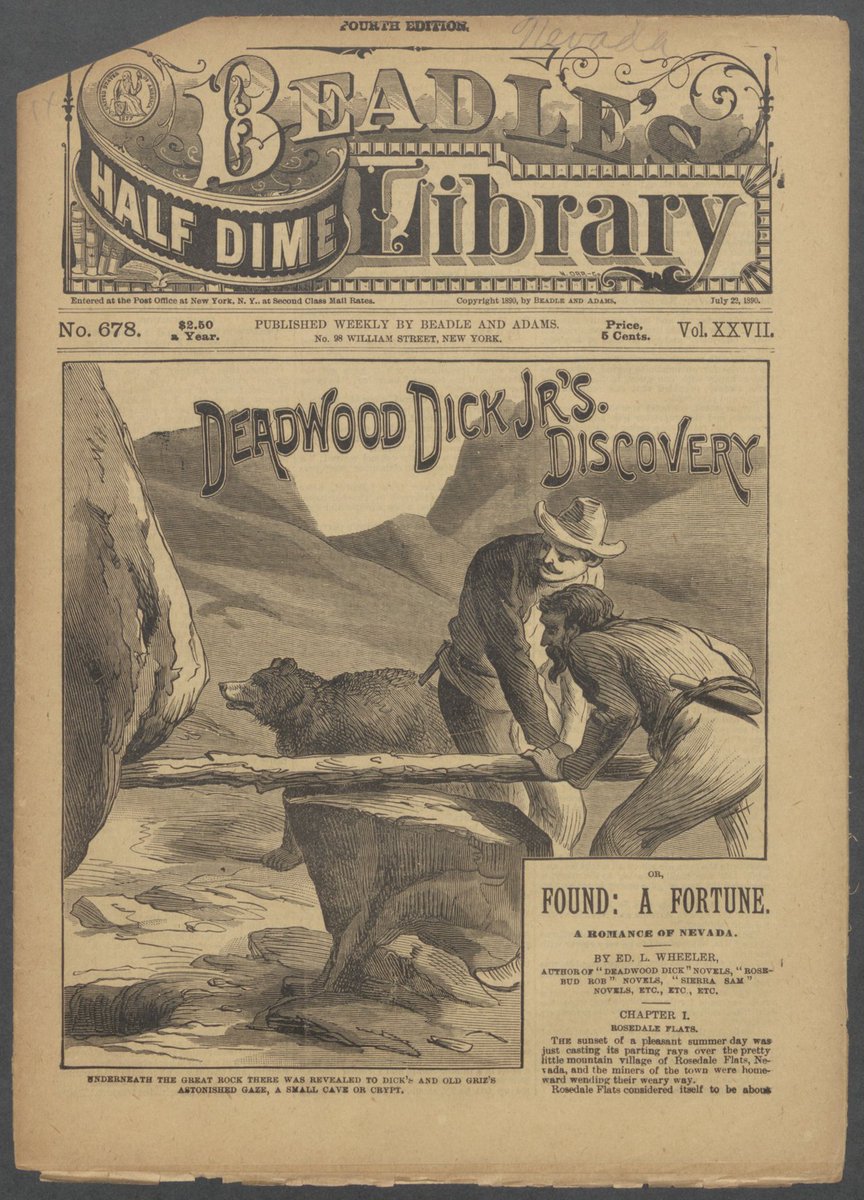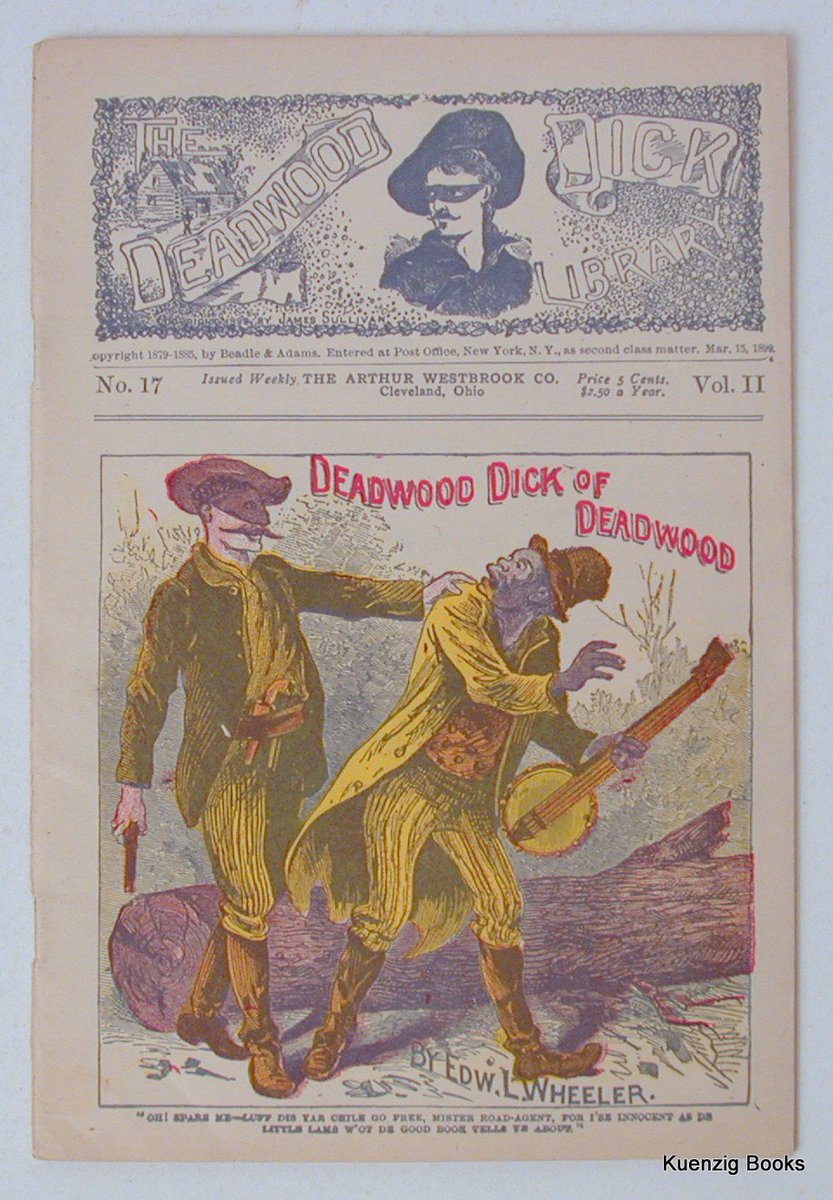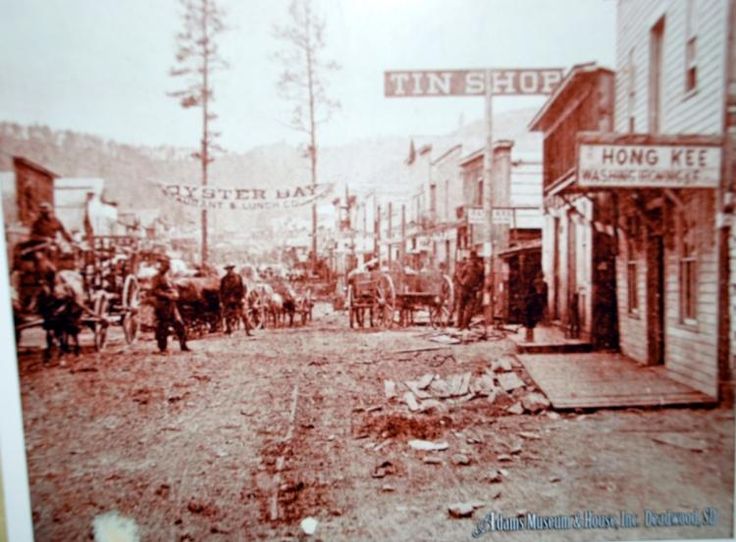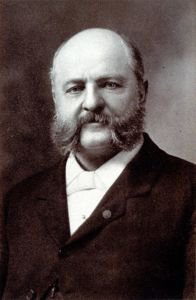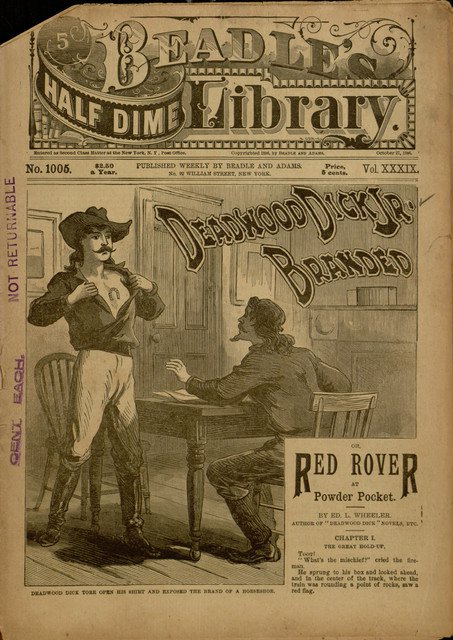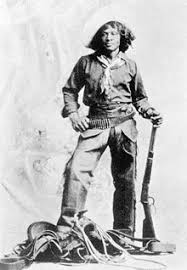So--incoming tweetstorm from me on leftist cowboy dime novels of the 1870s. If that doesn& #39;t interest you, you might want to mute me for the next couple of hours. (And then unmute me, I trust!)
Let& #39;s start with dime novels. The first dime novel (seen below) appeared in 1860, and the format (a copy of what the British were doing with story papers & penny dreadfuls) of regularly published high-pitched adventure proved to be immediately popular. 1/?
Not long after the adventure dime novel came the frontier, romance, & detective dime novels. But it took 12 years for first series hero to appear: Old Sleuth, whose six serials (1872-1891) were so popular that "sleuth" (short. "sleuth hound") became a byword for "detective." 2/?
In 1877 came the next major serial hero: Deadwood Dick, who only appeared in 34 stories (1877-1885) but whose name became a catchphrase for outlaws and cowboys more generally. Deadwood Dick has a standard backstory - Easterner comes West, through bad luck becomes an outlaw. 3/?
Continuity wasn& #39;t a concern in those days & the Dick stories don& #39;t make an integrated whole. Dick is killed in many of the stories & comes back the next issue w/out any mention of his death. Likewise, Dick& #39;s relationship w/Calamity Jane is w/ever the writers needed it to be. 4/?
There was one major difference between Deadwood Dick & his frontier hero predecessors & successors, though, & that was the inscribed politics of the Dick stories. They were hard leftist--both by comparison & in today& #39;s terms. These politics were influential on Dick imitators. 5/?
*Why* they were hard leftist will require a history lesson. During the 19th century American stories about the frontier go through distinct stages. The first, from 1800-1840, were usually about the creation of a white community through the violent defeat of the natives. 6/?
Examples of this sort of story are James F. Cooper& #39;s LAST OF THE MOHICANS & Robert Montgomery Bird& #39;s reprehensible piece of racist trash NICK OF THE WOODS. Cooper was genteel; Bird was Hitlerian. Same message in both: only way forward for whites ws the elimination of Natives. 7/?
Between 1840 and 1870 frontier stories were about the defense of the white frontier community. *But* in these stories the threats to the frontier broadened to include not just Natives & Mexicans, but corrupt bankers and businessmen. 8/?
The interesting aspect of this was that both the readers and writers of these stories were urbanites, to whom corrupt and wicked bankers & businessmen were a dreadful reality. Putting these evil men into a frontier setting was a way in which the reality of evil Capital could 9/?
be displaced into a frontier setting in which the problems of city life could be fictionally resolved in a way that the urban reading audience would find satisfactory. 10/?
The heroes of these stories were -defenders- of the status quo; evil businessmen would be defeated, but good ones allowed into frontier communities to prosper. Evil Capital was seen as an anomaly which, once defeated, would allow life to go back to The Way Things Should Be. 11/?
Note that this is quite similar to pre-1920s horror, in which the monster is an anomaly, and once vanquished reality--benign, evil-less reality--can be reasserted. Having a monster-of-the-week, in these stories, says nothing about the nature of reality. 11a/?
But things changed in the 1870s, which--I know you know this already, but--were a decade of violent conflicts between labor and management. Pennsylvania coal miner strikes in 1873 & 1874 and railway workers strikes in 1877 led to vicious repression & reprisals by management. 12/?
Repeat after me:
There is power in a factory, power in the land
Power in the hands of a worker
But it all amounts to nothing if together we don& #39;t stand
There is power in a union
Now the lessons of the past were all learned with workers& #39; blood
12a/?
There is power in a factory, power in the land
Power in the hands of a worker
But it all amounts to nothing if together we don& #39;t stand
There is power in a union
Now the lessons of the past were all learned with workers& #39; blood
12a/?
Conservative defenders of the establishment used newspapers to claim that criminals like Frank and Jesse James were caused by labor unrest, while liberal newspapers portrayed criminals as heroes of folklore, with the James brothers specifically compared to Robin Hood’s men. 13/?
This was the backdrop for the rise of the outlaw hero in American pop fiction in the mid-1870s. Characters like Deadwood Dick were made into Robin Hood-like noble outlaws: driven to outlawry by corrupt businessmen, the outlaws avenged themselves on them. 14/?
The victims of the outlaws& #39; robberies were the upper classes, usually Eastern, with hte outlaws& #39; communities specifically identified as being working class. Enemies of these communities were exploitative capitalists--stockbrokers, bankers, financiers. Not Natives or Mexicans.15/?
These stockbrokers, etc. were portrayed as evil not thru their actions but because of their innate identities. Officials who represented business and the financial establishment were *automatically* corrupt and automatically the enemy of the outlaw hero & the working class. 16/?
And so, by roundabout fashion, we return to Deadwood Dick. First masked outlaw of frontier fiction. Named after Deadwood, South Dakota, which had only been founded two years before, in 1875. Take note of that: Between 1875 and 1877 Deadwood had achieved a national reputation 17/?
as the archetypal frontier town--wild, lawless, and rife with crime. So naming a character "Deadwood Dick" and making Deadwood his base of operations was an automatic claim at topicality, similar to a superhero operating out of East St. Louis today. 18/?
This was most likely a marketing ploy on the part of Edward L. Wheeler, Dick& #39;s creator, or Beadle and Adams, Wheeler’s publishers. But Wheeler, consciously or unconsciously, proceeded to make Dick not just topical but symbolically representative of pressing social issues. 19/?
Dime novels about Dick & James Brothers were so popular and so influential that they single-handedly made the frontier dime novel abandon the Cooper/Bird model of frontier story and tell stories of outlaw heroes defending oppressed communities against wealthy capitalists. 20/?
In the beginnig Dick he is often pursued by “regulators” who, knowingly or not, do the bidding of a wealthy villain. In later stories Dick becomes a vigilante himself, defending Deadwood against outsiders who represented the evil Eastern moneyed interests. 21/?
It& #39;s important to note that in these stories "evil Eastern moneyed interests" did not = Jews. Jews weren& #39;t mentioned at all, although in real life of course there were Jewish cowboys (see below) who were all big guys who were great shots and spent money freely. 22/?
During these stories Dick& #39;s enemies were representatives of capital: business managers, bankers, stockbrokers, industrial capitalists, and financiers. They are almost uniformly Eastern, well-dressed, corrupt, and effete. (Note, below, Dick& #39;s faithful bear pal). 23/?
Natives and Mexicans were never the primary villains of the stories and only very rarely were they agents of the villains. More often they were portrayed as being friends & allies of Dick, his friends, *and the people of Deadwood.* African-Americans...well....24/?
they were portrayed in stereotypical terms, but always as men and women of good character and intent. If racism can be benign, the portrayal of African-Americans in the Deadwood Dick stories was benignly racist. 25/?
Dick& #39;s friends and allies were workers, farmers, artisans and shopkeepers. In one story Dick helps striking miners defy a large mining company trying to crush them. The miners explicitly link themselves with the striking Pennsylvania miners ( https://en.wikipedia.org/wiki/Coal_miners%27_strike_of_1873).">https://en.wikipedia.org/wiki/Coal... 26/?
In another story Dick leads a miners’ union and helps win fair wages for the workers. The communities Dick defends are agrarian, rural, & opposed to the sort of modernization that earlier frontier heroes like Hawkeye & Nick of the Woods had promoted. 27/?
The Deadwood Dick stories, as mentioned, were hugely influential, successful, and popular, both on the frontier and in Eastern cities. You can talk all you want about pro labor novelists and poets, but the Deadwood Dick dime novels had far, far, far more readers. 28/?
But of course this couldn& #39;t last. The anti-labor environment of the 1880s practically guaranteed that pro-labor, anti-management, anti-capital dime novels wre doomed. In 1883 Eastern newspapers began lobbying against the supposedly pernicious effects of Deadwood Dick et al. 29/?
A moral panic spread about dime novels, whipped up by newspapers whose owners were pals w/Capital and by that indefatigable asshole Anthony Comstock ( https://en.wikipedia.org/wiki/Anthony_Comstock)">https://en.wikipedia.org/wiki/Anth... whose 1883 book TRAPS FOR THE YOUNG directly linked the dime novels to juvenile crime & violence. 30/?
So....in 1883 the Postmaster General, Walter Gresham (boo hiss), ordered the cancellation of the Wide Awake Library, the dime novel in which appeared the Frank & Jesse James stories. (The James Brothers were as left-leaning as the Deadwood Dick stories). 31/?
Gresham& #39;s action caused the dime novel publishers to change the content of the outlaw stories. Deadwood Dick became a more conventional detective, pardoned and reconciled with society. In these post-1883 stories he& #39;s solidly middle class and no longer sympathetic to workers. 32/?
Predictably enough, sales fell and Deadwood Dick readers stopped buying and reading issues in which he appeared. In 1885 he stopped appearing--in his last appearance he is captured by the law and hanged for his crimes. 33/?
The following year, in 1886, Beadle & Adams (the publisher of Deadwood Dick& #39;s stories) began publishing the stories of Deadwood Dick, Jr. (inspired by Dick but nor relation). He appeared through 1897. 34/?
Appendix: Nat Love, the famous African-American cowboy (read about him here: https://en.wikipedia.org/wiki/Nat_Love ),">https://en.wikipedia.org/wiki/Nat_... was given or took the name "Deadwood Dick" sometime in 1877, after the fictional Dick& #39;s stories began appearing. 35/?
The dime novels never regained the leftist slant of the Deadwood Dick/James Brothers stories. The leading series characters, Buffalo Bill & Nick Carter & etc, would sometimes make vague noises in that direction but little more.
The lesson, as always: DISTRUST CAPITAL. 36/?
The lesson, as always: DISTRUST CAPITAL. 36/?
And that& #39;s all I& #39;ve got on the leftie dime novels of the 1870s & early 1880s.
New book by me, on international horror fiction, here: https://www.amazon.com/Horror-Needs-No-Passport-Literature/dp/1717952259/ref=sr_1_2?ie=UTF8&qid=1532970919&sr=8-2&keywords=horror+needs+no+passport
My">https://www.amazon.com/Horror-Ne... Patreon is here: https://www.patreon.com/jessnevins
Thanks">https://www.patreon.com/jessnevin... for reading this, everyone!
FIN
37/37
New book by me, on international horror fiction, here: https://www.amazon.com/Horror-Needs-No-Passport-Literature/dp/1717952259/ref=sr_1_2?ie=UTF8&qid=1532970919&sr=8-2&keywords=horror+needs+no+passport
My">https://www.amazon.com/Horror-Ne... Patreon is here: https://www.patreon.com/jessnevins
Thanks">https://www.patreon.com/jessnevin... for reading this, everyone!
FIN
37/37

 Read on Twitter
Read on Twitter